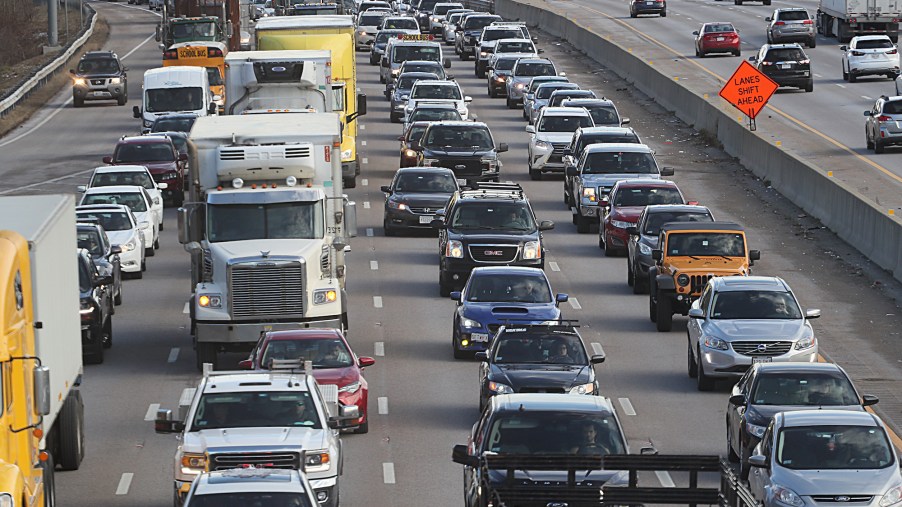
How Common Is Driving Anxiety?
It’s not unusual to be stressed while driving, especially in heavy traffic. But for some people, driving anxiety is more complicated than that. Some can develop a phobia from the posttraumatic stress of being involved in an accident or witnessing a serious one. Experiencing a vehicle breakdown can also be a harrowing experience. Practicing car safety can help. But for some, the panic can stem from something unrelated to driving.
Symptoms of motorphobia
If you’re experiencing extreme fear without any logical reason, you might be having a panic attack. It differs from an anxiety attack, which happens when worrying about something. Either condition is difficult to deal with when driving because your focus needs to be on the road.
An actual panic attack is as the name implies. It puts you in a panicky state. According to Healthline, symptoms include the following:
- A rapid heartbeat and pounding of the heart
- Dizziness and/or a tingling feeling
- Trouble catching your breath and sometimes a feeling of choking
- Sudden onset of sweating and/or chills
- Chest, head, or stomach pain
- Extreme fear
- Feeling like you’re losing control
You can inherit panic attacks from your family. They can also arise due to posttraumatic stress from something unaffiliated with driving. Severe life changes and stress can also bring about panic attacks.
What to do when you experience driving anxiety
Whether you have a fear of driving or normally feel comfortable behind the wheel, you can do a few things to help calm yourself when you feel extreme driving anxiety. If someone is with you, tell them what you are feeling. Pull off the road if possible. If you’re in a safe location, get out of the car and walk around. And if you cannot pull over, try one or more of the following:
- Turn on the A/C so it blows on your face, or open the windows
- Turn on your favorite music or podcast
- Drink a cool nonalcoholic beverage
- Gently suck on a sweet or sour hard candy
- Take long, deep breaths
Some people are lucky enough to experience only one panic attack in their lifetime. For others, the attacks can continue. If you’ve experienced one while driving, be prepared for the possibility of it happening again. Always carry water and a cool bottle of your favorite drink with you. Keep a stash of your favorite candy in the car, too.
Diagnosis and treatment of driving anxiety
Phobias aren’t that unusual. About 12 percent of Americans are severely afraid of something, be it elevators, spiders, or driving. If you have driving anxiety, using a vehicle known for its good safety record can help. But you should also see a mental health specialist. There are treatments for phobias and panic attacks. A physician or therapist can help you decide which will work best for you.
Sometimes it’s best to work through the anxiety. After stopping for a rest, if you can continue on your route, it will help you to know you can overcome the fear.
Learning what works best for you to cope will help you in the future, whether you have driving anxiety or panic attacks. Medications may also help by lessening the possibility of full-blown panic attacks.
Most of us use our cars on a daily or near-daily basis. We drive to and from work, take the children to school, go to the market, and run other errands. For those who suffer from driving anxiety or experience panic attacks, finding the best treatment is key to dealing with the necessity of driving.
Finding help in learning how to handle your anxiety might even allow you to enjoy driving. Maybe you’ll even be ready for your next road trip.


